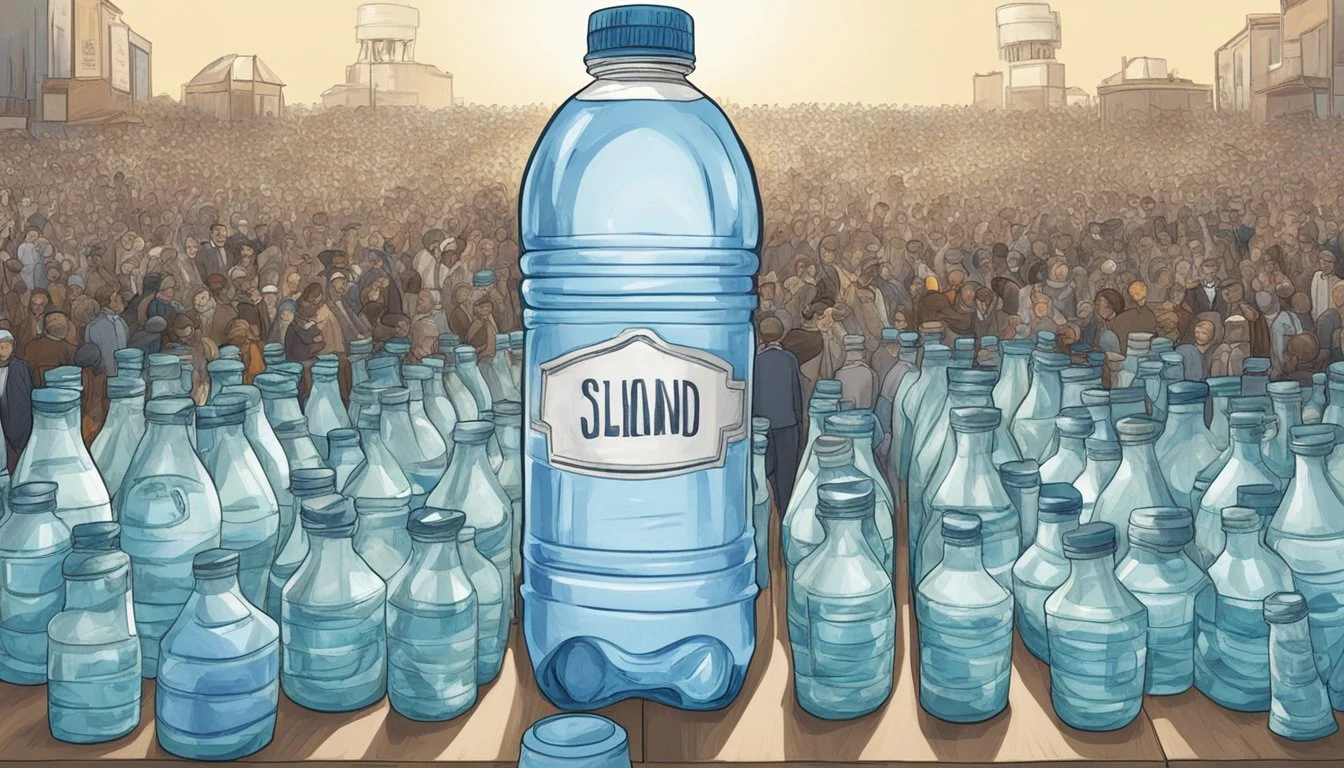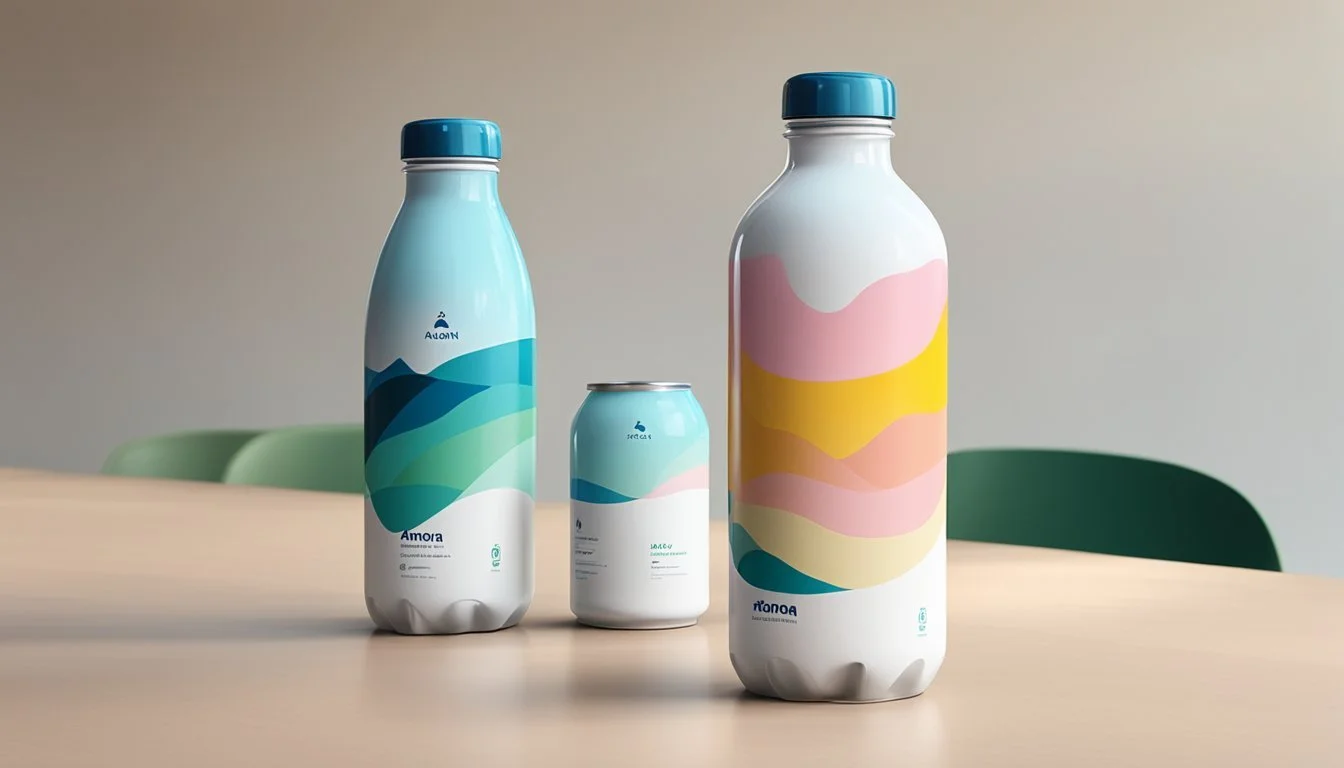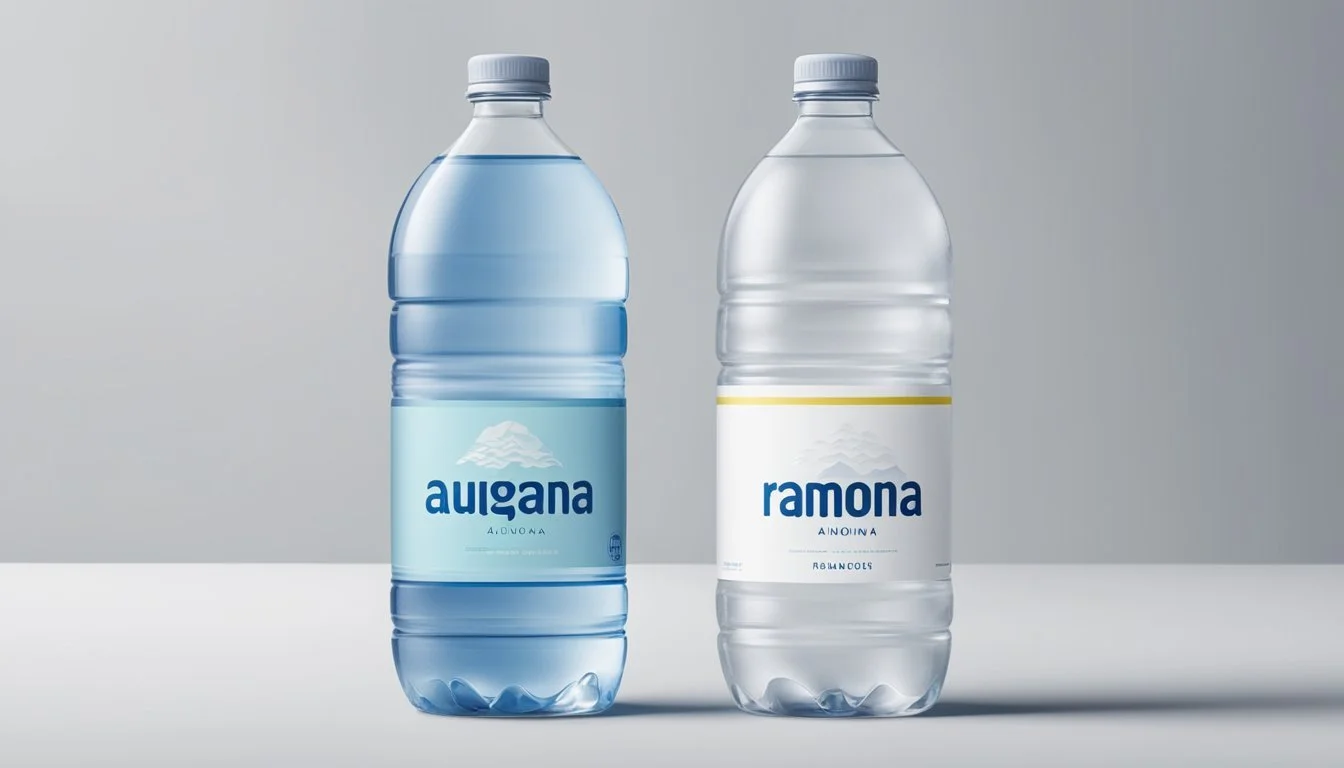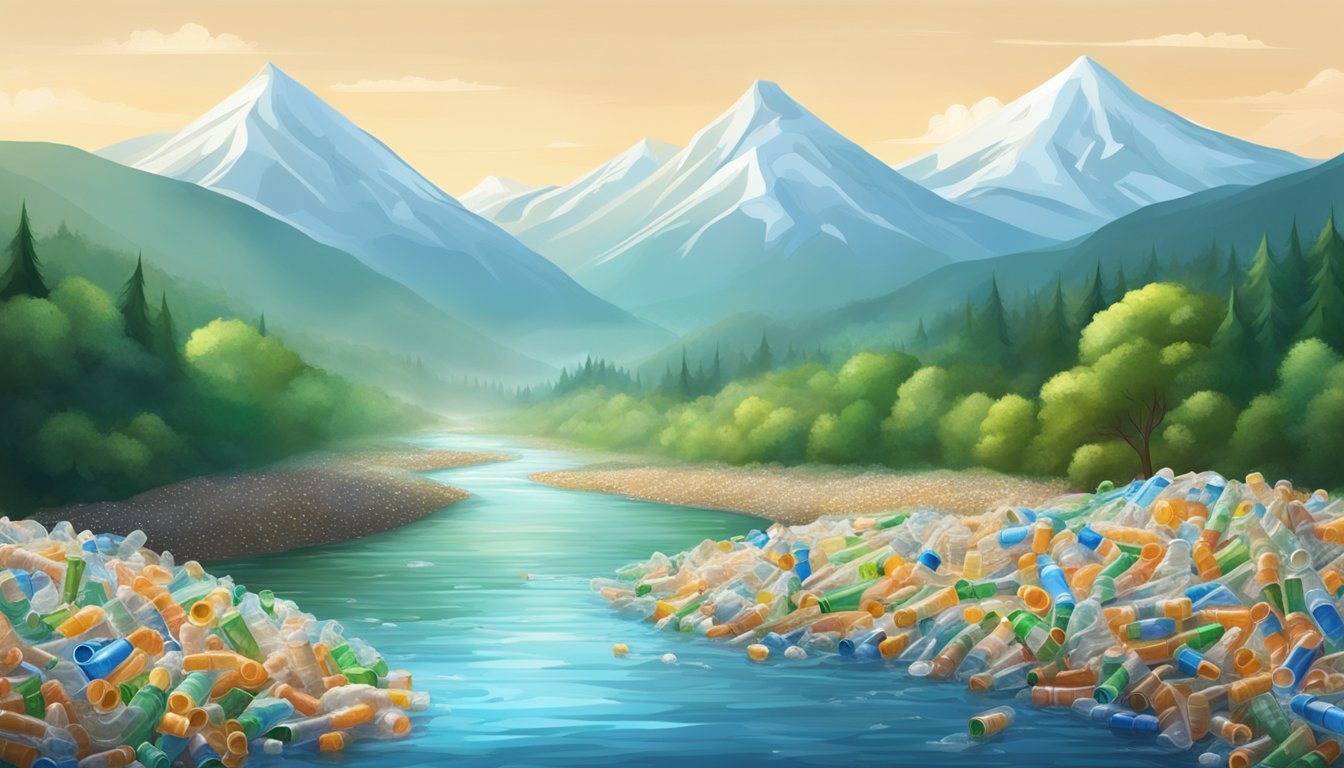Augi vs. Ramona
Which Bottled Water is Better for You?
When it comes to choosing the best bottled water, consumers often find themselves deciding between Augi and Ramona. Both brands have their unique qualities and advantages, making the decision a tough one for many. In this comparison, Augi stands out for its exceptional purity and refreshing taste, making it a preferred choice for many health-conscious individuals.
Ramona, on the other hand, prides itself on its sustainable sourcing and eco-friendly packaging. For those who prioritize environmental impact alongside hydration, Ramona presents a compelling option. The brand's commitment to sustainability adds a layer of appeal that goes beyond just the water itself.
Overall, whether Augi or Ramona is better depends largely on personal preference and priorities. Consumers looking for pure, crisp water may lean towards Augi, while those mindful of their environmental footprint might find Ramona to be the superior choice.
Understanding Bottled Water
Bottled water is available in various brands and types, catering to different tastes and preferences. Many popular water brands include Evian, Nestlé Pure Life, and Aquafina, each offering unique qualities.
Quality is a significant factor when choosing bottled water. High-quality bottled water is typically free from contaminants, has a neutral pH, and is rich in essential minerals, enhancing taste and health benefits.
Water is usually packaged in plastic or glass bottles. Plastic bottles are lightweight and convenient but can sometimes affect the taste of water. Glass bottles are more environmentally friendly and do not impart any taste, though they are heavier and less portable.
Consumers are increasingly aware of environmental concerns. Choosing environmentally friendly options, such as glass bottles or BPA-free plastic, reduces environmental impact. Bottled water from brands committed to sustainability also aligns with these values.
Bottled water offers exceptional convenience for busy lifestyles, providing a reliable source of hydration. It is easily transportable, making it an ideal choice for on-the-go individuals.
Table of Common Water Brands:
Brand Bottle Type Unique Feature Evian Plastic Rich in minerals Nestlé Pure Life Plastic Widely available Aquafina Plastic Purified through reverse osmosis Voss Glass Stylish design FIJI Water Plastic Silica content
Selecting the best bottled water depends on personal preference regarding taste, convenience, and sustainability. Understanding these factors helps make an informed choice.
Origin and Source
Bottled water comes from a variety of sources, each with unique properties. Understanding the origins of these waters can help determine which is better for taste, purity, and health benefits.
Natural Spring Water
Natural spring water originates from underground formations from where the water flows to the surface naturally. This type of water is collected at the spring or through a borehole tapping the underground formation. Ramona often sources its water from natural springs, promoting the purity and mineral content naturally found in the mountains or other natural formations.
Natural spring waters can be considered superior due to their less processed nature. The mineral composition remains unaltered, offering a genuine flavor profile. They often gain minerals as they flow over rocks, enhancing their health benefits.
Purified Water
Purified water undergoes a process to remove contaminants and impurities, making it a reliable choice for consistent quality. The most common methods include distillation, deionization, and reverse osmosis. Augi is an example of purified water, sourced from the Leesburg, Va., municipal supply.
The purification process ensures that the water is devoid of any unwanted chemical or biological contaminants. This results in a neutral taste that is often preferred by those who are sensitive to the flavors imparted by minerals or other natural components.
Mineral Water
Mineral water is sourced from protected underground reservoirs and contains a consistent level of minerals such as calcium, magnesium, and potassium, required by regulations. Unlike purified water, it retains all the naturally occurring minerals, adding both flavor and potential health benefits.
Ramona's mineral content highlights its commitment to delivering a product rich in essential nutrients. These minerals can contribute to an enhanced taste profile and provide health benefits such as improved digestion and bone health. Mineral water is often sourced from regions with high natural mineral deposits, ensuring consistency in every bottle.
Health and Safety
When comparing Augi and Ramona bottled water, it’s crucial to consider various health and safety aspects. These include potential contaminants, adherence to Environmental Protection Agency (EPA) standards, and the impact on vital organs.
Contaminants and Filtration
Contaminants in bottled water can range from naturally occurring minerals to various pollutants. Both Augi and Ramona claim to use rigorous filtration processes to eliminate harmful substances. Augi's filtration process emphasizes removing lead and other heavy metals, while Ramona focuses on maintaining optimal mineral content after removing impurities.
Filtration methods such as reverse osmosis and activated carbon filters are commonly used. Safe drinking water parameters ensure that levels of contaminants remain within acceptable limits, providing a degree of assurance to consumers.
Environmental Protection Agency Standards
The EPA sets stringent standards for safe drinking water which bottled water must comply with. Augi and Ramona both state that their products meet or exceed these standards. The EPA standards cover maximum allowable levels for various contaminants including heavy metals and microbiological agents.
It’s notable, however, that the FDA regulates bottled water as a food product, which means it must adhere to FDA regulations as well. Augi’s marketing claims heightened adherence to both EPA and FDA guidelines, whereas Ramona stresses its superior taste achieved through advanced compliance.
Effects on Organs
The health risks associated with bottled water consumption often relate to the liver and kidneys. The composition of minerals and any residual contaminants can affect these vital organs. Augi’s water, which emphasizes the absence of contaminants, claims to pose minimal risk to these organs.
Ramona, while maintaining lower levels of impurities, promotes the health benefits of its mineral content. Studies suggest that balanced mineral levels could support liver and kidney health by aiding in detoxification processes and efficient functioning.
Consumers need to consider specific health needs, particularly if prone to specific conditions that could be exacerbated by water consumption.
Taste Profile
Augi and Ramona bottled waters offer distinct taste experiences influenced by their mineral compositions and pH levels, which play significant roles in the flavor profile perceived by consumers.
Influence of pH Levels
pH levels in water affect its taste significantly. Augi has a standard pH level around 7, which offers a neutral taste. This neutrality makes it a common choice for those who prefer not to have any particular taste when drinking water.
Ramona, on the other hand, features a slightly higher pH level of about 7.5 to 8, giving it a subtly alkaline taste. This alkalinity can result in a smoother mouthfeel, which some people find more refreshing compared to neutral pH water.
The difference in pH not only influences taste but can also impact how the water interacts with other elements like minerals, enhancing or dulling specific flavor notes.
Mineral Content and Taste
Mineral content is a major factor in the taste profile of any bottled water. Augi's water source contributes to a balanced mineral content, including calcium, magnesium, and sodium, which provides a clean yet slightly complex taste.
In contrast, Ramona's mineral content is richer, offering a higher concentration of magnesium and calcium. This higher mineral content gives Ramona a more distinct and fuller taste profile. Consumers often describe this as a "crisp" or "refreshing" flavor, which makes it popular among those who enjoy more pronounced water tastes.
The presence of these minerals not only affects taste but also plays a role in the perceived quality and health benefits of the water. Higher levels of calcium and magnesium can leave a more satisfying and thirst-quenching effect.
The Role of Added Minerals
Added minerals can also play a role in differentiating the taste profiles of bottled water. Augi does not typically add extra minerals to its water, maintaining a more natural taste that appeals to purists. This can sometimes result in a flavor that lacks the "enhanced" feel some consumers might prefer.
Ramona, in contrast, adds electrolytes such as potassium and additional calcium. These additives contribute to a slightly tangy taste that enhances the overall water experience for many. The added minerals not only improve taste but can also deliver extra health benefits, such as improved hydration and electrolyte balance.
The strategic addition of these minerals helps to create a refreshing and rejuvenating drinking experience, making Ramona a preferred choice for those seeking both taste and functional benefits in their bottled water.
Environmental and Sustainability Issues
Exploring the environmental impact of bottled water involves looking at packaging materials, carbon footprints, and potential alternatives to plastic bottles. Understanding these factors helps in making more eco-friendly choices.
Packaging and Material Use
Augi and Ramona utilize different packaging materials that impact their environmental footprint. Augi uses plastic bottles, which are often made from PET, a widely recyclable material, but with low actual recycling rates. Ramona opts for sustainable options like boxed water or glass bottles, both of which have a lower environmental impact.
Plastic bottles contribute significantly to pollution. They're lightweight and convenient but generate waste that often ends up in landfills or oceans. In contrast, boxed water and glass are heavier but can be recycled more effectively, making them more eco-friendly options.
Carbon Footprint of Bottled Water
The carbon footprint of bottled water includes the entire lifecycle of the product, from production to disposal. Augi's use of plastic bottles contributes to a higher carbon output due to the energy-intense processes involved in plastic production and recycling. Transportation plays a crucial role as well; lighter plastic bottles may reduce transportation emissions, but their end-of-life impact remains significant.
Ramona, using glass or boxed water, may have a different carbon footprint. Glass bottles are heavier, leading to higher transportation emissions, but they are infinitely recyclable. Boxed water often uses renewable materials, reducing overall carbon emissions.
Alternatives to Plastic Bottles
Emphasizing on sustainable practices, both companies could consider alternatives to plastic bottles to reduce environmental impact. Reusable bottles made from stainless steel, aluminum, or glass offer durability and repeated use, significantly cutting waste.
Augi could explore boxed water packaging, which uses paper-based cartons that are more environmentally friendly and easier to recycle. Ramona's approach to adopting these materials shows foresight in addressing environmental concerns, potentially influencing industry standards.
Choosing eco-friendly packaging solutions and promoting reusable bottles can make a substantial difference in reducing the environmental footprint and embracing sustainability in the bottled water industry.
Comparing Brands
When evaluating Augi and Ramona, it's important to consider factors such as quality, price, and source. These aspects are crucial in distinguishing between premium, mass-market, and emerging water brands.
Premium Water Brands
Fiji sources its water from an artesian aquifer in Viti Levu, Fiji. This brand touts the naturally occurring minerals and electrolytes that give its water a unique taste. Evian comes from the French Alps and is known for its consistent mineral composition, appealing to those who appreciate a smooth profile. Acqua Panna from Tuscany provides a balanced mineral content that enhances its soft, velvety taste, favored by many fine dining establishments. Icelandic Glacial is notable for its pristine, natural source at the Ölfus Spring in Iceland, ensuring a pure, low-mineral content ideal for hydration.
Mass-Market Water Brands
Dasani and Aquafina dominate this category, known for their wide availability and affordability. Dasani uses municipal water sources and enhances its taste with added minerals, while Aquafina undergoes a thorough purification process ensuring consistent quality. Poland Spring and Zephyrhills, both sourced from various natural springs in the U.S., offer cost-effective solutions with a touch of local flavor. Nestlé Pure Life follows an extensive purification process and adds minerals for taste, making it another go-to option for everyday hydration needs.
Emerging Water Brands
Pura Vida and Peeble are newer entrants aiming to combine quality with sustainability. Pura Vida emphasizes its eco-friendly bottling and commitment to purity, whereas Peeble focuses on mineral-rich water sourced from unique aquifers. Flow stands out with its alkaline spring water packaged in environmentally friendly paperboard cartons, appealing to eco-conscious consumers. CORE Hydration and LIFEWTR differentiate themselves with added electrolytes and designed pH levels, targeting fitness enthusiasts and arts patrons respectively. Essentia, known for its ionized alkaline water, claims to enhance hydration and performance, which resonates with athletes and active individuals.
Each of these brands brings something distinct, from their sourcing practices to their packaging and marketing strategies, providing consumers with a variety of choices based on their preferences and values.
Pricing and Affordability
When considering bottled water choices, pricing and affordability play crucial roles in decision-making.
Augi is often positioned as a premium brand, reflecting in its price. A standard 500ml bottle of Augi typically ranges from $2.00 to $3.50. Augi’s packaging and source water quality contribute to this higher price point, attracting consumers who prioritize these premium factors over cost.
Ramona, on the other hand, belongs to the mass-market brands category. Its 500ml bottle generally costs between $1.00 and $1.75. This affordability makes Ramona a popular choice among budget-conscious consumers, ensuring quality without breaking the bank.
Brand Price Range (500ml) Category Augi $2.00 - $3.50 Premium Brand Ramona $1.00 - $1.75 Mass-Market Brand
Special promotions and bulk purchasing can further influence pricing. Augi often has higher prices even in bulk orders, whereas Ramona offers significant discounts for larger quantities, enhancing its affordability.
Augi’s price reflects its image and targeted market, aiming for those willing to pay a premium for potential health benefits and brand prestige.
Ramona caters to a broader audience, focusing on competitive pricing to maximize accessibility and consumption.
In summary, price-sensitive consumers may prefer Ramona, while those seeking a premium experience might opt for Augi.
Consumer Insights
Consumer preferences for Augi and Ramona bottled water are influenced by various purchase drivers and factors related to brand loyalty and repeat purchases. This section delves into the specifics of why consumers prefer one brand over the other.
Purchase Drivers
Consumers often highlight the taste as a primary driver for choosing bottled water. Augi’s taste is frequently described as clean and slightly sweet, appealing to those who prefer a mild flavor. Ramona, on the other hand, is characterized by its crisp and refreshing taste, attracting those who seek a more invigorating option.
Availability plays a crucial role. Augi is widely accessible in most retail stores, making it a convenient choice for many. Ramona, although more niche, is available in select markets and online, catering to a specific segment of the consumer base.
Price sensitivity also impacts purchasing behavior. Augi is known for its affordability, making it a popular choice among budget-conscious consumers. Ramona is priced higher due to its premium branding, appealing to those willing to pay more for perceived quality.
Brand Loyalty and Repeat Purchase
Augi’s customer reviews often reflect high satisfaction with consistent quality, fostering brand loyalty among its consumers. Repeat purchases are common due to Augi’s reliable presence in stores and the trust it has built over time.
Ramona, although less widespread, commands a dedicated following. Brand loyalty is fueled by the brand’s unique marketing strategies and exclusive availability, which make consumers feel part of a special group. Repeat purchases are driven by the distinctive taste and premium nature of the water.
Consumers’ behavior also indicates a sense of community and identity associated with their choice. Augi drinkers often cite practical reasons for their loyalty, such as ease of purchase and consistent affordability. Ramona enthusiasts, however, emphasize the brand’s unique qualities and the perceived status it provides.
In summary, consumer insights into Augi and Ramona highlight significant differences in the purchase drivers and brand loyalty factors, shaping distinct customer bases with varying motivations for repeat purchases.
The Role of Regulation
Regulations for bottled water ensure its safety and quality. These regulations differ within the United States and internationally, highlighting standards from agencies like the FDA and EPA.
FDA vs. EPA Standards
In the U.S., the FDA regulates bottled water, while the EPA manages tap water standards. The FDA mandates that bottled water must meet the standards of the Federal Food, Drug, and Cosmetic Act (FFDCA) and various parts of Title 21 of the Code of Federal Regulations.
Bottled water is required to undergo processing, packaging, storage, and distribution practices that safeguard its purity. The EPA, on the other hand, enforces rigorous standards for public drinking water under the Safe Drinking Water Act. This includes setting maximum contaminant levels for various substances.
Both FDA and EPA aim to ensure water safety, but their methods vary. For instance, the FDA focuses on the end product's safety, while the EPA emphasizes water quality throughout the supply and delivery process.
International Standards
Internationally, bottled water standards can vary significantly. Many countries follow the guidelines set by Codex Alimentarius, a joint program of the World Health Organization (WHO) and Food and Agriculture Organization of the United Nations (FAO). These guidelines provide a framework for bottled water safety, including limits on contaminants and labeling requirements.
European Union regulations, for example, are quite stringent, often considered more in-depth than those in the U.S. They categorize water into "natural mineral water" and "spring water," each with specific regulatory mandates.
These varied international standards ensure that whether bottled water is consumed in the U.S. or abroad, stringent checks are in place to protect consumers' health. The combination of local and international regulations helps maintain quality and safety across borders.
Health and Wellness
Understanding the health benefits of Augi and Ramona bottled waters is essential. This section will explore their impact on hydration, energy levels, and body function.
Hydration and Energy
Hydration is fundamental to maintaining energy levels. Augi, sourced from the Leesburg, Va., municipal water supply, ensures adequate hydration despite its slight sulphuric taste. Ramona, known for its high purity, is also effective in keeping individuals hydrated without any unpleasant aftertaste.
Children and adults alike benefit from proper hydration, supporting physical stamina and reducing fatigue. Both brands help maintain energy by replenishing fluids lost throughout the day. Additionally, staying hydrated aids in preventing headaches and improving cognitive function, crucial for maintaining alertness and performance.
Water and Body Function
Water supports vital organ function. Augi and Ramona contribute to maintaining kidney health by aiding in waste removal, crucial for detoxification. Proper hydration ensures the smooth operation of the digestive system, reducing constipation risks and promoting regular bowel movements.
Both waters play a role in regulating body temperature and maintaining skin health. Hydration impacts circulation, helping transport nutrients and oxygen to cells. Also, it lubricates joints, reducing discomfort and promoting physical activity.
By choosing Augi or Ramona, individuals can support their overall wellness goals through balanced hydration.








